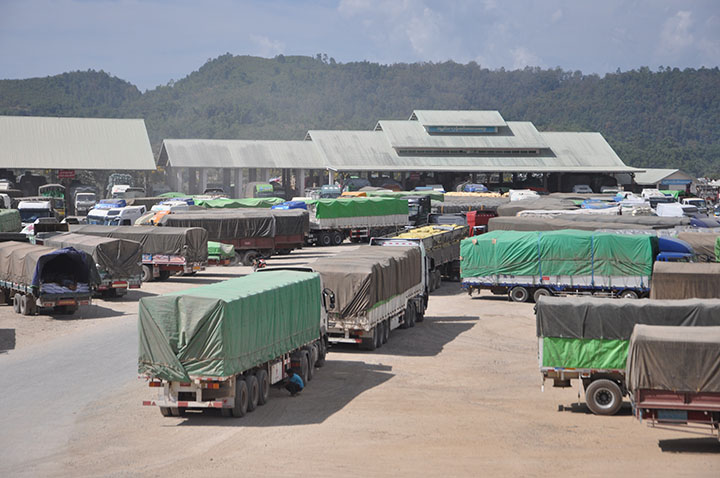24 June
Between October and mid-June in the 2018-2019 Fiscal Year, the value of exports through Muse, a border between Myanmar and China, stood at US$2.3 billion, decreasing by over $800 million or 25.8 per cent, as against the same period last 2017-2018 FY.
According to the Ministry of Commerce, Myanmar-China bilateral border trade during the period totalled $3.587 billion, including $1.259 billion, which showed an increase in value of $76.5 million or 6.47 per cent, in comparison with the previous fiscal.
At this time last FY, bilateral trade between the two countries topped $4.324 billion in total, with exports amounting to $3.141 billion and imports valued at $1.182 billion.
Myanmar delivers goods to China, the largest neighbouring country, from both border routes and non-border routes.
Border trade between the two countries is mainly conducted through five gates—Muse, Lweje, Kanpiketee, Chinshwehaw, and Kengtung. Of them, the Muse gate sees the highest trade, in terms of both volume and value.
As of 14 June, this FY, the China- Myanmar bilateral trade through all border gates reached nearly $4.4 billion, with trade totaling over $130 million at Lwejel, over $400 million at Chinshwehaw, about $270 million at Kanpiketee, and almost $6.7 million at Kengtung.
Usually, Myanmar sells agricultural, minerals, marine and forestry products, along with manufactured goods to China, the world’s most populous country. At the Sino-Myanmar border, eel, crab, watermelon, muskmelon, mango, rice, and cattle are marketable export products.
Moreover, Myanmar buys consumer goods, raw materials, construction equipment, automobiles, motorbikes, and capital goods from its largest neighbour.
The Myanmar Investment Commission has granted fresh investments of $295.7 million from 72 projects from China as on April in the current fiscal year.—Shwe Khine
(Translated by Khaing Thanda Lwin)


